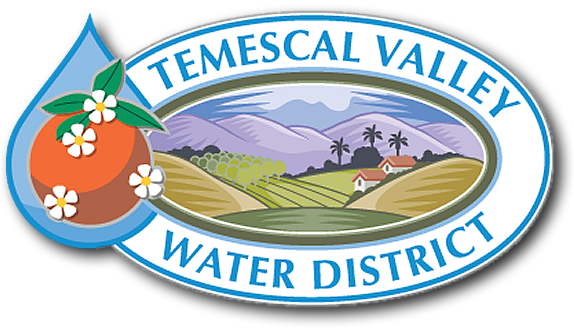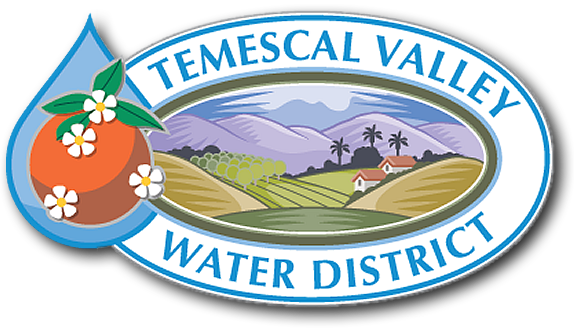Special Notices
Cost-of-Service Rate Study
The Temescal Valley Water District (District) periodically reviews its utilities to determine if adjustments are required to continue meeting its operational costs, system improvements, debt requirements, and adequate reserve funding to satisfy its reserve policies. The District hired IB Consulting to conduct a comprehensive cost-of-service analysis to develop proposed rates for Fiscal Year 2023 (FY 2023) through FY 2027 (Rate Setting Period) for its water, wastewater, and recycled water utilities.
Please contact us directly at 951-277-1414 with questions.
Conservation Notice
Temescal Valley Water District has officially entered into a Stage II - Water Alert as detailed in our Water Conservation Program. In response to decreasing statewide water supplies, we ask all customers to use water wisely and help us conserve our resources through the summer and beyond. For detailed information, please reveiw the following documents:
Drought Newsletter
Conservation Program
Please contact us directly at 951-277-1414 with questions.
December Public Hearing Results
The 2020 Urban Water Management Plan (UWMP) was adopted during our December Public Hearing in order to ensure our ability to adequately supply water to meet existing and future demands under a wide range of water supply conditions, including water shortages. The finalized plan is available for public review by clicking here.
Please contact us directly at 951-277-1414 with questions.
The Temescal Valley Water District
Always Great Water.
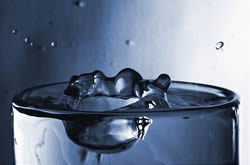
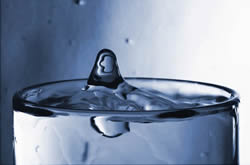
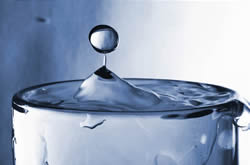
Nestled in the foothills of the Cleveland National Forest is Temescal Valley Water District, the local purveyor of potable and reclaimed water for residents within the Temescal Valley area. TVWD also provides wastewater collection, treatment and disposal for the Temescal Valley residents, including the Butterfield Estates and California Meadows communities.
Temescal Valley Water District obtains its water from the Metropolitan Water District of Southern California, who imports it from Northern California. The water is then treated at the Henry J. Mills Water Filtration Plant in Riverside, CA. This water is commonly called "State Project Water" and is one of the highest quality sources of water in the State.
Since it was originally formed as the Lee Lake Water District in 1965, many changes have taken place in the Temescal Valley and in the Water District itself. What was once land farmed for citrus crops is now home to numerous residential communities, businesses and industrial parks. However, the one constant over this period of time has been the local Water District and its commitment to provide personal, reliable and efficient service to its customers.
District Calendar
...MORE...
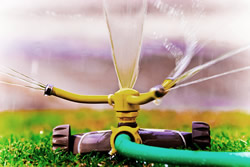
Money Saving Tips
Reduce monthly cost and help save the environment by utilizing these water saving tips for inside and outside your home.
Water District News
Bedford Coldwater Groundwater Sustainability Authority
Investigation of Groundwater/Surface Water Interactions at Temescal Wash
Bedford Coldwater Groundwater Sustainability Authority
Admin Update
LOW INCOME HOUSEHOLD WATER ASSISTANCE PROGRAM (LIHWAP)
Community Action Partnership of Riverside County
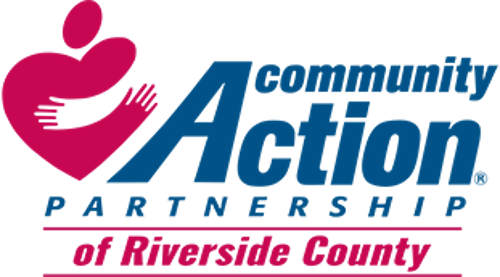
- Be a Riverside County resident.
- Have an unpaid water or sewer bill.
- Meet the income guidelines.
Related Documents: LIHWAP Flyer.pdf
Pressure Problems
Who is responsible?
When it comes to water damage to your property, who is responsible?
Riverside County Guide to California Friendly Landscaping
Guide to California Friendly Landscaping
For General Release
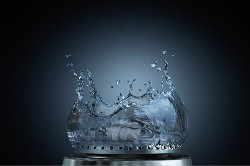
Throughout the Country, areas such as Riverside County are facing drought conditions. As our region continues to grow, water demand continues to increase. Landscape irrigation is a primary factor in our water consumption practices. There are practical solutions that we can employ today by designing efficient irrigation systems, selecting water-wise plant species, and explanding our use of recycled water.
Earlier this year, the Board of Supervisors adopted Ordinance No. 859 with the goal of promoting water-efficient landscaping and irrigation practices. To further this goal, the Planning Department created the Riverside County Guide to California Friendly Landscaping (Guide) which includes a California Friendly Plant List to assist in the selection of low-water use plants. The Guide also describes landscape and irrigation standards which will ensure that the finished product contributes positively to the community aesthetic.
The standards contained in the Guide will be applied during the development review porcess for projects within the unicorporated areas of Riverside County. Riverside County Planning Department staff look forward to working with landscape architects, water agencies, plant nurseries, irrigation designers, contractors, planners and the public to promote water-efficient landscaping practices.
For more information concering this program, please contact Kristi Lovelady at (951) 955-0781.
Notice to Temescal Valley Water District Customers
Use of chloramine treated water
For general release
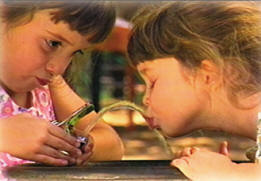
The Temescal Valley Water District receives all of its water from Northern California, which is transported south by the State Water Project. State Project water is treated at Metropolitan Water District’s Henry J. Mills Filtration Plant. Chloramine is used for disinfection instead of chlorine. Chloramine treatment is not a new technology. Chloramine has been used for disinfection purposes for many years and is an effective disinfectant. Chloramine is a combination of chlorine and ammonia and is used instead of chlorine to reduce the level of total trihalomethanes (TTHMs) in the water and to meet the TTHM drinking water standard.
Chloramine does not pose any health threat to the general population. However, Chloramine can be a serious problem to individuals with kidney disease undergoing dialysis treatment on artificial kidney machines unless the Chloramine contained in the water used for the dialysis treatment is reduced to levels acceptable for this purpose. Anyone currently using or contemplating the use of an artificial kidney machine should contact your physician and the County Health Department to assure that the proper precautions are taken.
Chloramine, like chlorine is toxic to fish. Holding the water for a period of time may dissipate chlorine, but it will not remove Chloramine. Chloramine must be neutralized prior to the water being able to support fish life. Local pet and fish shops should be contacted to determine the best measures to cope with a chloraminated water supply.
If you have any questions regarding our water treatment, please contact Ken Caldwell at (951) 277-1414.
...MORE...

Meeting the water and wastewater service needs of the Temescal Valley since 1965



